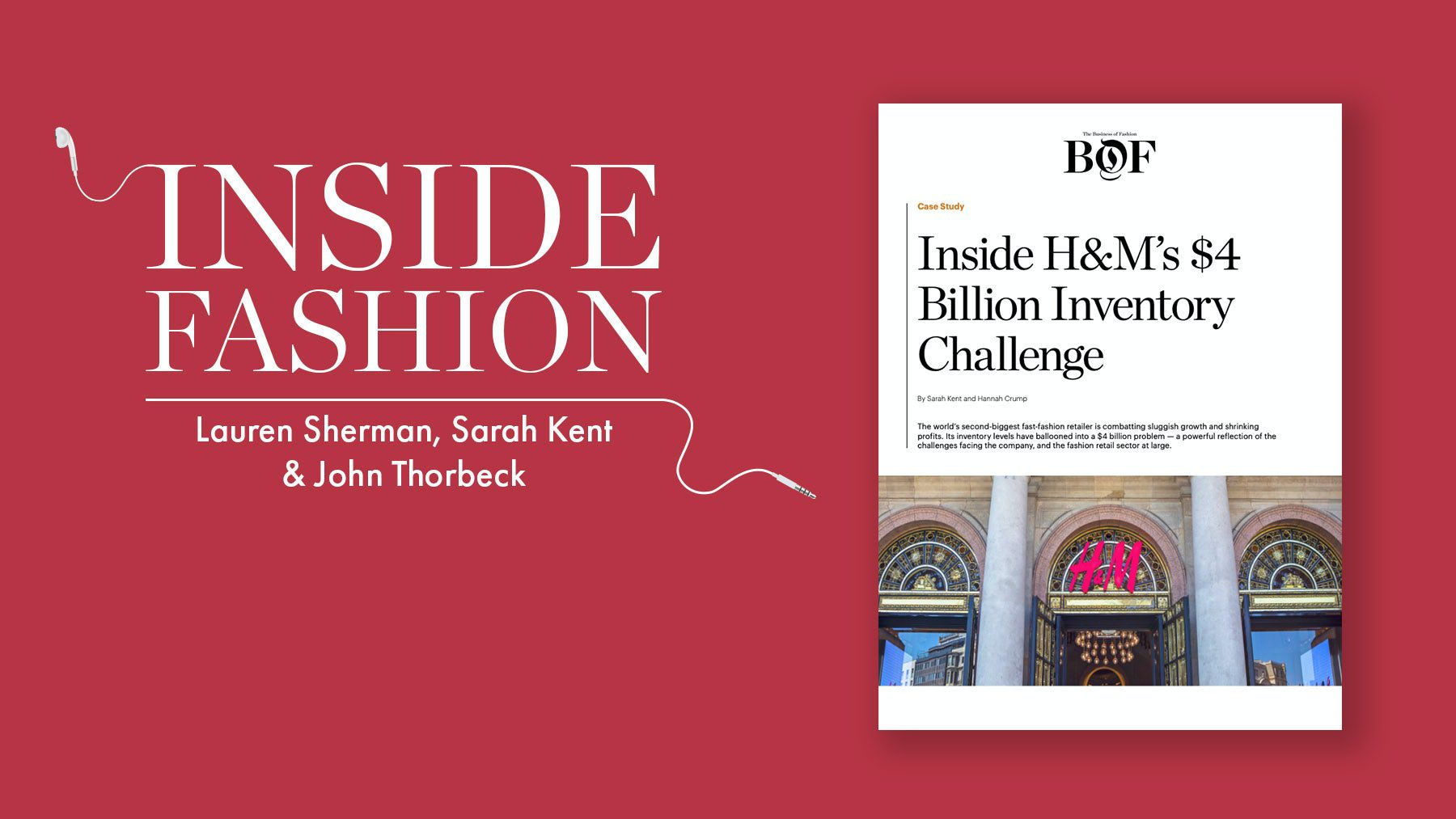
This article is published in tandem with Inside H&M’s $4 Billion Inventory Challenge, BoF’s latest case study exploring H&M’s long-term strategy to survive and thrive in the new retail paradigm. Exclusively available to BoF Professional members, download and read the case study here.
To subscribe to the BoF Podcast, please follow this link.
LONDON, United Kingdom — H&M, the world’s second-biggest fast-fashion retailer, had a problem that was only becoming more visible. Its rise was stalling and along with an increasingly outdated business model, the retail group was grappling with waning customer engagement with its core brand. As a result, H&M’s net profit has been in decline every year since 2015, and in its first-quarter report in 2018, the group disclosed that its inventory levels had risen to $4 billion.
H&M’s problems, however, are far from unique. Retailers such as Diesel and Arcadia group have both filed for bankruptcy in the United States as nimble online-only brands such as Boohoo.com and Fashion Nova, and low-cost retailers such as Primark, make the competition even fiercer.
In response to its inventory challenge, H&M devised a plan to invest and improve in four key areas: digital platforms — from online shopping to data-rich customer forums and loyalty programmes; infrastructure of supply chain and logistics; the desirability of its products and physical stores; and finally, future-proofing its business operations to avoid repeating the same mistakes.
Years into its turnaround, there are signs that H&M’s investment is paying off: sales increased 11 percent in the first half of 2019 and its customer loyalty programme now counts over 43 million members. However, the company’s inventory levels have remained stubbornly high at $4 billion and its profits slid 11 percent in the first half of 2019 compared to a year earlier.
On July 25, BoF Chief New York Correspondent Lauren Sherman, Senior Correspondent Sarah Kent and Chainge Capital Chairman John Thorbeck, who has advised numerous brands and retailers, including competitors of H&M, held a live conversation with members of the BoF Professional community. The discussion focused on the details of H&M’s inventory challenge, learnings from its strategy to resolve it, and how other players in fast-fashion retail have addressed similar problems.
Digital Strategy: Self-Disruption Versus Self-Destruction
- As Thorbeck notes, the specific case of H&M “echoes a lot of the challenges faced by retailers throughout the decades.” Gap, Marks & Spencer and Ralph Lauren are all brands that have struggled with high inventory.
- One of the biggest problems for established brick-and-mortar retailers is their slowness to adapt and invest in their online platforms and last-mile operations, which improve customer experience as well as better positioning the retailer to compete alongside successful online-only platforms.
- The digital-analogue divide in fashion retail is a “costly” one, according to Thorbeck, and is one that extends to the first mile of logistics as well as the last.
Globalised Supply Chains: What Are the Risks/Rewards?
- Thanks to globalisation, clothing retailers are able to find low-cost — although not always sustainable or ethical — options for manufacturing their products around the globe.
- H&M, for example, has gone in recent years from having 50 percent to 80 percent of its manufacturing based in Asia. As Thorbeck notes, “they’re looking to expand but they’re also looking to do it on the sourcing advantages of cheaper countries.”
- However, an important outcome of choosing far-flung manufacturing bases is the loss of speed to market, which Thorbeck argues “should be a primary asset and capability” in reducing cost and risk for a retailer. “Speed is not just about being trendy; it’s about the capital that’s at risk in a supply chain,” which can manifest in a lost sale, deep discounting on a product, or a high inventory. In other words, this is the high cost of doing things on a low-cost budget.
- As Kent notes, it is difficult for a brand to control its supply chain if it is not a verticalised part of its company’s operations; until fairly recently, under the increased scrutiny of garment workers’ rights, many companies didn’t even fully understand their own supply chains. However, streamlining one’s supply chain to include fewer, larger suppliers can help articulate end-to-end product journeys.
- Fashion is notoriously stuck in its ways when it comes to design cycles and retail models, but Thorbeck suggests that clothing brands could learn a lot from looking at successful companies outside the industry (such as Apple and Amazon).
Future-Proofing: The AI Question
- Customer data — which H&M has in spades — is only valuable to a retailer if it makes use of it and has the flexibility in its logistical operations to act on its findings. As part of its investment in AI, H&M is piloting a number of tools that aren’t necessarily futuristic but help to collect and manipulate data about its stores, so as to gain a global-yet-local understanding of factors such as shopping behaviour, weather, and specific locations of its shops.
- Much like the question of verticalising versus outsourcing supply chain, retailers need to choose between buying or building their AI capabilities. While H&M is choosing to buy, for example, Zara is conducting research alongside MIT.
- There is also the potential for internal cultural conflicts in a fashion company turning to an AI team to voice concerns or ideas on the design side of its operations.
- Ultimately, Thorbeck argues, what’s exciting about the current fashion retail climate is that it’s not just about turnarounds from individual companies, “but a whole industry reinventing itself.”
Related Articles: Inside H&M’s $4 Billion Inventory Challenge
[ Op-Ed | Fashion Needs a New Business Model. Speed Is the Answer. ]
Subscribe to BoF Professional for unlimited access to BoF articles, plus exclusive benefits for members. For a limited time, enjoy a 25 percent discount on the first year of an annual membership, exclusively for podcast listeners. Simply, click here: http://bit.ly/2NZTAmY, select the Annual Package and use code PODCAST2019 at the checkout.
To contact The Business of Fashion with comments, questions, or speaker ideas please e-mail podcast@businessoffashion.com.



